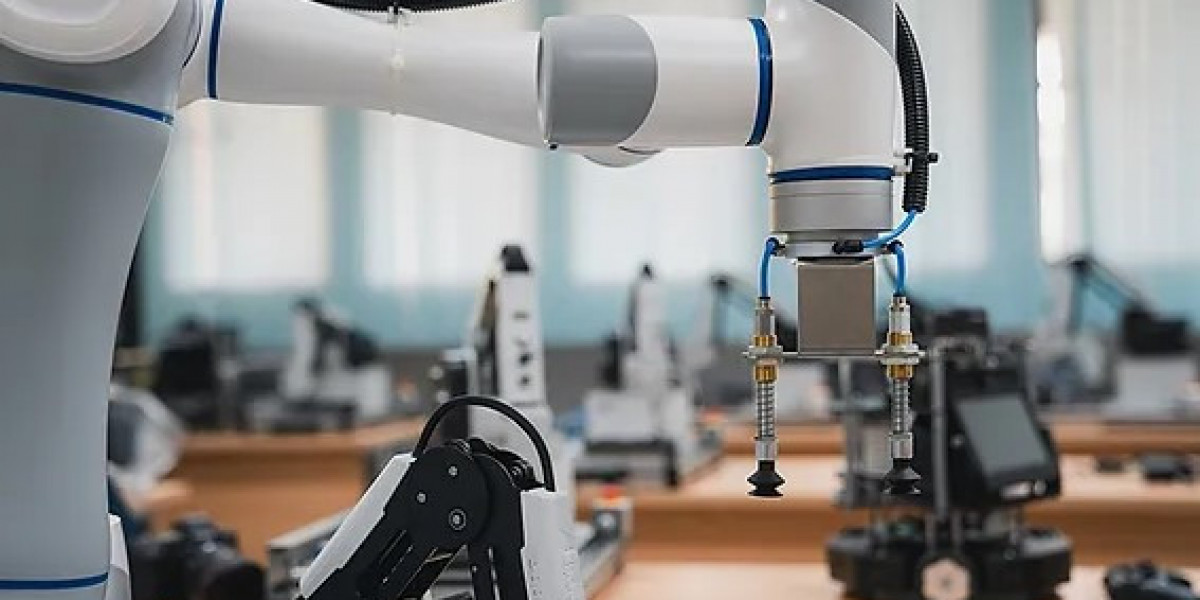In today's fast-paced industrial landscape, robotic arms are transforming the way precision manufacturing operates. These advanced machines are not merely tools; they represent a significant leap forward in automation, efficiency, and accuracy. This article explores the various types of robotic arms, their applications, benefits, and the future of robotic technology in manufacturing.
Understanding Robotic Arms
Robotic arms are mechanical devices designed to mimic the movements of a human arm. Composed of interconnected joints, sensors, and end effectors, these machines can perform tasks with high precision and speed. Their ability to replicate human motions makes them ideal for a variety of applications, from assembly lines to complex surgeries.
Types of Robotic Arms
Articulated Robotic Arms: These arms feature multiple rotary joints, providing a wide range of motion and flexibility. They are commonly used in welding, painting, and assembly tasks.
Cartesian Robots: Operating on linear axes (X, Y, Z), Cartesian robots excel in tasks requiring controlled, precise movements. They are often used for pick-and-place operations.
SCARA Robots: Known for their horizontal movement capabilities, SCARA robots are perfect for assembly operations where speed and accuracy are paramount.
Delta Robots: These high-speed parallel robots are primarily used in packaging and sorting applications, thanks to their quick and precise movements.
Collaborative Robots (CoBots): Designed to work alongside humans, CoBots enhance productivity while ensuring safety in shared workspaces.
Key Features of Robotic Arms
Robotic arms come equipped with several features that make them indispensable in manufacturing:
- Multi-Axis Movement: This allows for intricate operations that require precision and flexibility.
- End Effectors: Interchangeable tools such as grippers or welding torches enable robots to perform a variety of tasks.
- Sensors: Force and torque sensors help maintain controlled movement, preventing damage to both the robot and the objects it handles.
- AI Integration: Advanced robotic arms can incorporate artificial intelligence and machine learning, allowing them to adapt to new tasks and improve their efficiency over time.
- Remote Monitoring: Cloud-based systems enable real-time control and supervision, enhancing operational oversight.
Applications in Precision Manufacturing
Robotic arms are making strides across multiple facets of manufacturing:
1. Manufacturing and Assembly
Robotic arms automate the assembly of products in various sectors, including electronics, automotive, and consumer goods. They facilitate precision component fitting in aerospace and heavy machinery, significantly improving production rates and accuracy.
2. Welding and Painting
In industries like automotive manufacturing, robotic arms perform high-accuracy welding and consistent spray painting. The result is improved surface coating quality and reduced human error.
3. Material Handling and Packaging
Robotic arms efficiently lift and move heavy materials in warehouses, as well as sort and package items in food processing and e-commerce sectors. Their ability to handle repetitive tasks reduces labor costs and increases efficiency.
4. Medical and Pharmaceutical Use
In the medical field, robotic arms assist in complex surgeries, offering unparalleled precision. They are also utilized in pharmaceutical manufacturing for drug handling and packaging, ensuring high standards of quality and accuracy.
5. Research and Development
Robotic arms play a vital role in laboratories, enabling precise experiments and testing. They assist researchers in robotics and AI advancements, fostering innovation in various scientific fields.
Benefits of Robotic Arms
The integration of robotic arms in manufacturing offers numerous advantages:
- Improved Efficiency: Robots can operate continuously without fatigue, significantly enhancing production speed.
- Enhanced Accuracy: Robotic arms reduce human errors, maintaining consistent quality in manufacturing processes.
- Cost Savings: While the initial investment may be high, the long-term savings from reduced labor costs and increased productivity are substantial.
- Increased Safety: By taking over dangerous tasks, robotic arms minimize workplace hazards.
- Scalability: Robots can be easily reprogrammed for new tasks, making them adaptable to changing production needs.
Challenges and Future Outlook
Despite their many advantages, robotic arms face challenges such as high initial costs and the need for skilled personnel for programming and maintenance. Additionally, the integration of robots into existing production lines can be complex.
Looking ahead, the future of robotic arms is promising. With advancements in AI, lightweight designs, and enhanced connectivity through 5G and IoT, robotic arms will continue to evolve, making them even more efficient and capable.
Conclusion
Robotic arms have revolutionized precision manufacturing, offering a blend of speed, accuracy, and automation that is reshaping industries. As technology progresses, these machines will play an increasingly central role in the future of manufacturing, driving innovation and efficiency across the globe.









